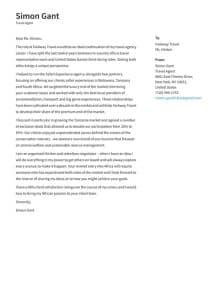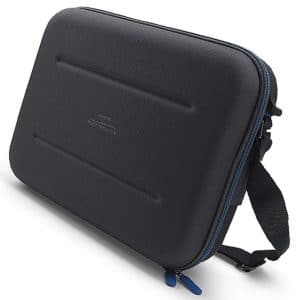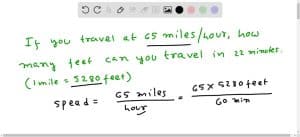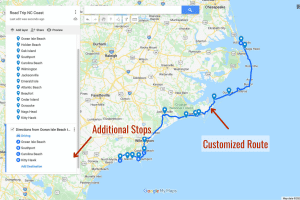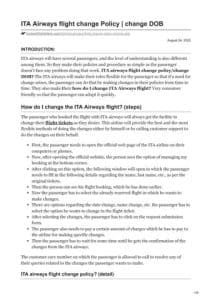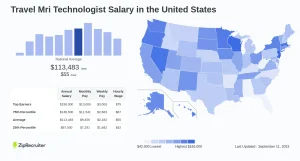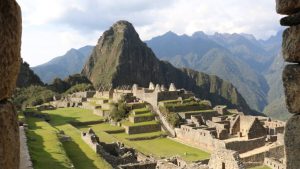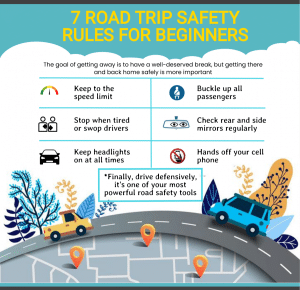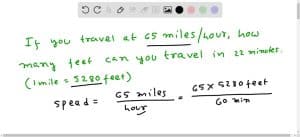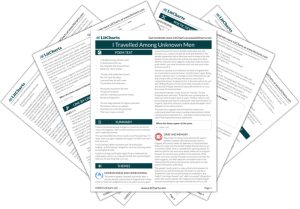Welcome to Hosteliest. In today’s post, we dive into the intriguing subject of why demand for maps and travel guides surged. Join us as we chart this course through the exciting world of Hotels and Travel.
What Prompted the Demand for Maps and Travel Guides: A Deeper Look
Ever wondered what prompted the demand for maps and travel guides? Hold on to your curiosity as we take you on a fascinating journey in this article! We explore the historical development of maps and travel guides and why they’ve become essential companions for modern-day travelers.
The Rise of Exploration
The first catalyst on our grand timeline prompting the demand for maps and travel guides was the age of exploration. As humans began traversing unknown territories, the need to document their routes became increasingly evident. This resulted in the creation of rudimentary maps, often drawn on animal skins or papyrus. These maps aided early explorers in navigating unfamiliar terrains and also acted as a record of their courageous voyages.
Commercialization and Globalization
With the advent of globalization and commercialization, the world became more interconnected, and travel began to rise in popularity. Consequently, the necessity for precise and detailed maps and travel guides grew. These tools not only served as navigational aids but now also packed valuable information about various locales – from popular tourist spots to hidden gems, important landmarks, local cuisines, and cultural practices.
Modern Tourism
The boom in the tourism sector in the 20th Century further underscored the demand for maps and travel guides. Travel agencies were on the rise, international flights became more affordable, and people’s curiosity about foreign cultures and landscapes increased. Those venturing out for leisurely holidays or adventurous explorations depended heavily on maps and travel guides to plan their journeys comprehensively.
The Rise of Digital Platforms
But what sparked the latest surge in the demand for these travel tools? Enter the digital age. Technology has transformed how we access and use maps and travel guides. No longer confined to paper-based mediums, these resources are now available on various digital platforms – smartphones, tablets, and computers.
Today, numerous apps and websites provide detailed maps and in-depth travel guides at a few clicks. The convenience of having all necessary info in one place is irresistible to our always-on-the-go generation. This transition to digital platforms fueled an unprecedented rise in demand for maps and travel guides.
The Role of Maps and Travel Guides Today
In conclusion, what prompted the demand for maps and travel guides was a combination of exploration, globalization, commercialization, tourism boom, and technological advances. Despite evolving over centuries, the core function of maps and travel guides remains the same – aiding navigation and enriching travel experiences.
Whether you’re a casual traveler looking for a stress-free vacation or an adventure-seeker willing to explore off-beaten paths, maps and travel guides are essential. They can help you navigate foreign cities, understand different cultures, plan your journey better, and ultimately make your travel experiences more rewarding and enjoyable. So, next time you embark on a journey, don’t forget your trusted companions – your map and travel guide!
Exploring the Surge: What Triggers the Growing Demand for Maps and Travel Guides in the Hospitality and Travel Industry
The hospitality and travel industry has been experiencing a surge in the demand for maps and travel guides. This phenomenon is driven by several factors that underpin the growing need for physical navigation and informational tools.
Firstly, the cultural and technological shifts have paved the way for the rise of independent travelling. As it becomes more popular, individuals are embracing the opportunity to create personalized travel experiences. This involves selecting particular destinations, creating unique travel routes, and exploring local cuisines. As such, maps and travel guides become critical resources in facilitating these individualized experiences.
Secondly, technology advancements and digitization have made it easier to access, share, and use maps and travel guides. Websites and mobile applications devoted to travel enable users to instantly download different maps and guides. These digital platforms not only provide geographical guidance but also offer insights into local attractions, restaurants, cultural sites, and accommodation options. In essence, maps and travel guides have transitioned from being simple navigation aids to becoming comprehensive travel planning resources.
In addition, changes in traveler behavior and preferences have contributed to the surge. Today’s travelers value authentic experiences and interactions with local communities. They desire to explore off-the-beaten-path spots and delve into the local culture. To this end, maps and travel guides that provide information about lesser-known destinations and insider tips on local secrets attract a considerable following.
Lastly, the COVID-19 pandemic has had an impact on the growing demand for maps and travel guides. With travel restrictions changing frequently, travelers are relying heavily on these resources for their trip planning. Real-time updates on lockdown measures, quarantine requirements, and safer travel routes provided by maps and guides prove invaluable in the current unpredictable travel landscape.
In conclusion, the rising demand for maps and travel guides in the hospitality and travel industry is driven by the trend towards independent travel, the growing desire for authentic local experiences, the widespread use of digital platforms, and the impact of the COVID-19 pandemic. As such, these resources are set to play an even more significant role in shaping future travel experiences.
The Emergence of Tourism and the Subsequent Need for Maps and Travel Guides
The advent of tourism has played an instrumental role in the increase in the demand for maps and travel guides. This surge can be attributed to the rapid industrialization and development of transportation which made travelling more accessible. As more people started exploring different destinations, there was a growing need to understand the geography, culture, hotels and attractions, thus prompting the demand for detailed maps and travel guides. Furthermore, the evolution of technology and internet has further amplified this need as travelers have the world at their fingertips.
The Relevance of Maps and Travel Guides in the Era of Digital Transformation
In today’s digital era, maps and travel guides continue to hold significant relevance. The integration of technology in the tourism industry has resulted in new forms of maps and travel guides that now include user-friendly mobile applications and websites. These digital guides have become invaluable tools for travelers providing detailed information about their destination, including the best hotels, local eateries, and tourist attractions. Besides, with the use of GPS technology, paper maps have been replaced by digital maps that provide real-time information helping travelers to navigate seamlessly.
The Importance of Maps and Travel Guides for Hotel Industry
Hotels play a fundamental role in the tourism industry. As such, maps and travel guides have been crucial in aiding the hotel industry’s growth. They help potential visitors scout hotel locations, evaluate their vicinity to major attractions, and decide on suitable accommodation options. By effectively using these tools, hotels can attract more guests and offer enhanced customer service. For instance, by including maps in their websites or mobile apps, they are able to provide precise location details to prospective clients, thereby reducing the chance of lost bookings due to geographical confusion. Moreover, travel guides are useful in promoting the hotel’s services and amenities!, showcasing their uniqueness, and providing travelers with a sense of what they can expect from their stay.
Frequently Asked Questions (FAQ)
“What factors have contributed to the growing demand for maps and travel guides within the hotel and travel industry?”
The hotel and travel industry has witnessed an increasing demand for maps and travel guides. This rising demand is driven by several key factors:
1. Expansion of Tourism Industry: One of the primary reasons for the growing demand for maps and travel guides is the global expansion of the tourism industry. The number of people traveling both domestically and internationally has significantly increased in recent years. Travelers frequently rely on maps and guides to navigate unfamiliar locations, which has led to a surge in demand within the hotel and travel industry.
2. Increased Availability of Information: The internet has made it easier than ever before to access detailed information about any location worldwide. Despite this, the sheer volume of available information can be overwhelming. Therefore, curated maps and travel guides have become indispensable tools for tourists, offering condensed, relevant information that makes trip planning more manageable.
3. Digitalization: The digital revolution has also played a significant role in the increased demand for electronic maps and travel guides. Travelers now prefer digital guides that are easily accessible on their smartphones and tablets, contributing to the growing market.
4. Customization: Today’s travelers seek personalized experiences. Customizable maps and travel guides allow tourists to select and focus on their areas of interest, making them highly desirable.
5. Sustainability Conscious Travel: As more travelers become aware of environmental concerns and responsible tourism, sustainable travel guides highlighting eco-friendly accommodations, restaurants, and activities are growing in popularity.
Overall, these key factors have driven the demand for maps and travel guides within the hotel and travel industry, making these resources essential tools for both businesses and travelers.
“How has the increased interest in adventure travel and cultural exploration prompted a surge in demand for maps and travel guides?”
The modern era has seen a significant increase in the interest for adventure travel and cultural exploration, leading to a surge in demand for maps and travel guides. This shift towards more experiential travel is driven by travelers’ desire to immerse themselves in the local culture of their destination, often opting for more off-the-beaten-path experiences and destinations.
Adventure travel typically involves activities like hiking, sailing, cycling, wildlife treks, or other outdoor activities. These activities usually take place outside of urban environments, which necessitates accurate geographical knowledge, thus increasing the demand for maps. Not only do these guides provide important information on routes and terrains, but they also offer crucial safety details.
Cultural exploration, on the other hand, has given rise to demand for travel guides that provide more than just a list of popular tourist attractions. Travelers are keen to explore local histories, traditions, cuisines, and languages, and they often rely on comprehensive travel guides to help them achieve a fuller experience.
Furthermore, hotels and travel businesses have found a significant opportunity within this trend. By providing personalized maps and travel guides that reflect these unique travel interests, they can enhance their services and improve guest satisfaction. Hotels can partner with local businesses and tour guides to create custom maps and guides, offering their guests a more authentic and enriching travel experience.
In conclusion, the increased interest in adventure travel and cultural exploration not only stimulates the demand for maps and travel guides but also extends opportunities for hotels and travel-related businesses to cater to this growing market segment.
“In what ways has the expansion of the tourism and hotel sector influenced the need for more comprehensive maps and travel guides?”
The expansion of the tourism and hotel sector has significantly influenced the demand for more comprehensive maps and travel guides in a number of ways.
Firstly, as more hotels and attractions become available worldwide, travelers require more detailed information to plan their trips effectively. This includes not only the location of these resources, but also details on accessibility, amenities, and nearby attractions. Furthermore, as tourists become more adventurous and eager to explore less known areas, there is a growing need for more extensive maps and guides.
Secondly, the increased competition within the hotel and tourism sector has led to a greater emphasis on providing superior customer service, which includes offering comprehensive travel information. Hotels are now not just places to stay, but also travel hubs that provide guests with valuable local insights and recommendations, thus necessitating up-to-date and detailed maps and travel guides.
Thirdly, the rise of digital technology in the tourism industry, such as smartphone apps and GPS systems, has increased the usability and accessibility of maps and travel guides. These digital tools allow for real-time updates and personalized recommendations, further driving the demand for comprehensive travel information.
Lastly, there is a strong correlation between tourist satisfaction and the quality of travel information provided. A study showed that tourists who used detailed maps and travel guides reported a more enjoyable travel experience. Hence, the expansion of the tourism and hotel sector has indirectly influenced the need for more comprehensive maps and travel guides by raising tourist expectations and standards.
In conclusion, the growth of the tourism and hotel sector has profoundly impacted the demand for more thorough maps and guides, enhancing the overall travel experience for adventurers worldwide.
In conclusion, the exponential growth in the demand for maps and travel guides is a reflection of a society that is continually evolving and expanding its frontiers, both literally and metaphorically. It is not only about geographical curiosity but also represents an inherent desire to explore, discover, and better understand our world. Embracing this shift, the hotel and travel industry has to adapt and innovate, providing dynamic and versatile information resources to meet the needs of today’s savvy travelers. Undoubtedly, the future of travel is excitingly unpredictable, but one thing we can be certain of is the continuous importance of maps and travel guides for any adventure.
Error: El post actual no se encuentra en el array de posts.




















